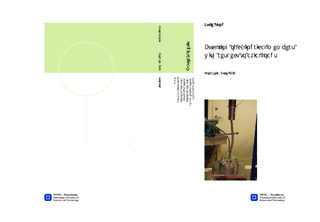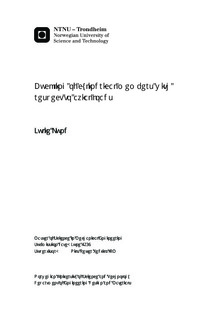| dc.description.abstract | Managing technology and taking advantage of the opportunities to further development is essential to ensure increased hydrocarbon recovery and barrier security for upstream energy companies. Interwell is a well intervention company operating globally, with main competence in plug and straddle solutions with related setting, pulling and measurement tools. In many of Interwell s product lines, cylindrical members and pipes are being exposed to axial compressive loads in both static and dynamic conditions. The purpose of this study was to increase the knowledge on how to facilitate full utilization of the limited design space available for Down Hole Equipment by minimizing the gap between the numerical and the experimental results and to find global safety factors. This study introduces options to supplement the safe design of axially loaded members, focusing mainly on the Setting Chamber Mandrel, a cylindrical member in the Hydrostatic Setting Unit. The Setting Chamber mandrel has to resist compression caused by increasing well pressure while running in hole. The prominence of the failure mode depends on several factors including member slenderness, section slenderness, strength, influence of connections and restrains, geometric imperfections and residual stresses.The members in this study have been characterized into three general types depending on their proneness to buckling; short, intermediate and long. The dividing lines between short, intermediate and long members shall not be considered as accurately defined; furthermore the maximum load-carrying capacity of a member in each category is based upon different types of mechanical failure scenarios. The Setting Chamber Mandrel is classified as intermediate and will fail by both yielding and buckling; i.e. inelastic buckling behavior. Failure of intermediate members could be progressive and unpredictable, and it is common practice to use large safety factors when predicting the buckling strength. A safe design approach has been suggested for predicting the critical load and critical stresses of intermediate members by comparing experimental results to existing literature.The experimental study consists of three experimental tests; TEST 1: length and diameter, TEST 2: temperature and TEST 3: well pressure. The results obtained from the experimental study were compared with NS-EN 1993-1-1:2005, FE-analyses and established linear buckling theory; Euler and J.B. Johnsons equations. Linear elastic eigenvalue buckling analysis and nonlinear static buckling analyses were performed with finite element software package Abaqus 6.12. In order to understand the buckling behavior of the Setting Chamber Mandrel elastic-plastic material properties was added to the nonlinear large deformation buckling analysis. The results from the analyses were used as a pre-study for the experimental testing and for post-buckling analysis to validate the results to establish the reliability and uncertainties of the numerical methods. Results indicate that NS-EN 1993-1-1:2005 and the nonlinear analysis techniques are suitable to accurately predict the critical buckling load of an axially loaded compression member. The results from the nonlinear static large deformation buckling analysis using elastic-plastic material properties show most agreement with the experimental studies.The partial safety factors in the global safety factor presented in this study are utilized based on anticipated conditions to ensure that build in functionality and constructional integrity of the Setting Chamber Mandrel will not affect the overall integrity of the Hydrostatic Setting Unit. The appropriate global safety factor for intermediate members with similar shape and boundary conditions as the Setting Chamber Mandrel is concluded to be 1.5 when calculating buckling strength with Interwell s safe design procedure. In order to obtain a high degree of confidence in the design of axially loaded compression members it is recommended to follow the complete methodology provided in this study. | nb_NO |

